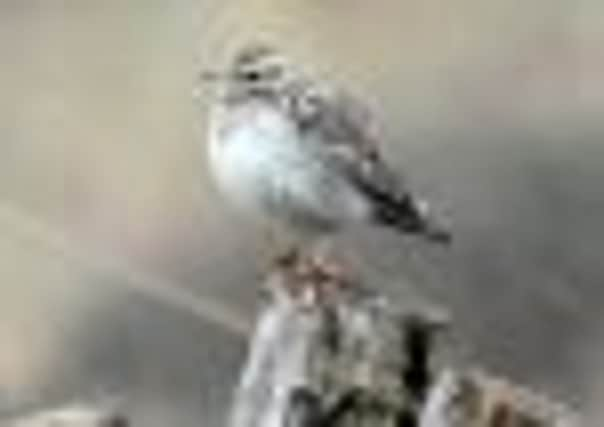Birdwatch: Woodlarks make most of their opportunities


Only 25 years ago, the woodlark was confined to a handful of sites in southern England, and in 1986, there were only 220 pairs.
Since then there has been a dramatic seven-fold increase in numbers all across England and northwards as far as Yorkshire, where the first two pairs bred in 1997.
Advertisement
Hide AdAdvertisement
Hide AdThey have now become established at a number of South Yorkshire sites, including the Hatfield Moors reserve, where the woodlark’s lyrical song, with its recurrent ‘lu lu lu’ phrase, rings out each spring.
In many places, woodlarks have been helped by the felling of mature tree plantations which has left them more areas with plenty of good cover for their nests – well-woven cups made of moss and grass stalks and hidden in clumps of heather – along with plenty of song perches and an ample food supply.
They have also been helped by the widespread restoration of their traditional habitat on lowland heathlands.
More recently, they have colonised several of the sandy heaths around York, including Skipwith Common, now a National Nature Reserve managed by Natural England.
Advertisement
Hide AdAdvertisement
Hide AdThere have been a number of studies carried out by the British Trust for Ornithology in southern England in which woodlarks have been fitted with distinctive three-colour rings, but very few studies further north, probably because the woodlark is still a relatively new arrival in our region.
Little is known about where woodlarks and their young go when they leave Skipwith. Although the young are fully self-sufficient after three weeks, they stay in family groups with their parents in the autumn.
Also, it is hoped to determine if the same birds return to the common each year; studies in other areas suggest that each male returns to the same territory in spring but takes a different female each season.
Quail are still being reported in exceptional numbers, with 22 heard at the weekend from the minor roads around Bempton, Grindale, Boynton and Rudston, East Yorkshire, eight between Hunmanby, Reighton and Burton Fleming and still at least 17 around the village of Kirklevington, Cleveland.
Advertisement
Hide AdAdvertisement
Hide AdTwo spoonbills are present at the RSPB’s Blacktoft Sands reserve and two at Fairburn Ings, while an adult common crane continues to be seen near the Nosterfield Nature Reserve, North Yorkshire.
An Alpine swift has been seen several times over Spurn.
The latest survey of nightjars in the North York Moors forests has found that there are at least 500 pairs present. A walk to see and hear them is being organised on July 22 in Cropton Forest. The walk, costing £5 per person, leaves at 9.30pm. To book, ring 01 751 472771 when you will be told the meeting place.
Two honey buzzards have been displaying from the raptor viewpoint in Wykeham Forest.
The first returning green sandpipers are being seen, while a knot and black-tailed godwit were among waders seen at the Old Moor reserve, South Yorkshire.
Advertisement
Hide AdAdvertisement
Hide AdThe Yorkshire Naturalists’ Union has just published its latest Bird Report covering 2009 and a summary of information gathered from 39 bird club annual reports, and data collected by more than 1,680 observers and from national data sources.
The cost of this mammoth undertaking, which also includes a full report and pictures of Britain’s first amur falcon, seen at Tophill Low, in September 2008, is £12, including postage, and can be ordered from Jill Warwick, at Sharow Grange, Sharow, Ripon HG4 5BN, North Yorkshire. Cheques should be made payable to the Yorkshire Naturalists’ Union.
This year is a particularly significant one for the union as it marks the 150th anniversary of its foundation.
New members are welcome; ring 01904 636952 (evenings) or e-mail [email protected]